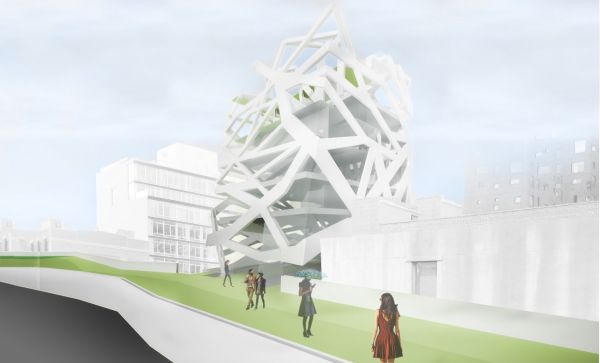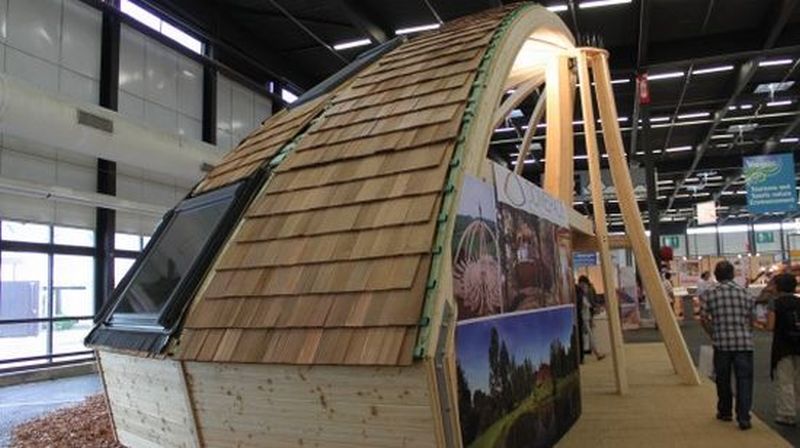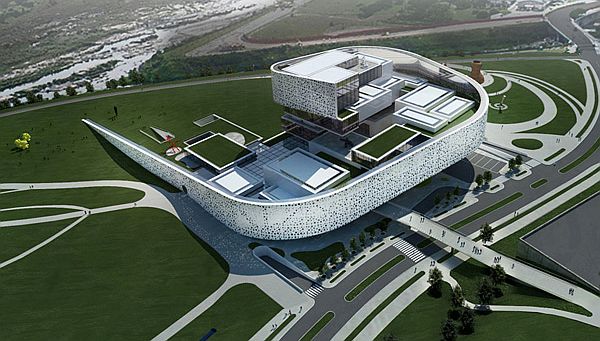The existing land area will be unable to house the needs of the growing population in the future. Therefore many buildings are being developed to provide space solution in the crowded cities. The logic is simple – earlier we used to develop farms, houses and other infrastructure on the flat land area only. However, to accommodate the increasing population, the idea of vertical expansion has been purported. In this plan, farms and public areas are cultivated on floors of a high rise building. So, on the same plot of land we can build several zones, one on top of the other, which can be put to various uses such as farming, housing, recreation centers, etc. This provides a sustainable solution for the limited space available in densely populated areas.

The structure
Beans and elongated chunks of wood have been amassed irregularly in this structure. It looks somewhat like a jagged and uneven crystalline rock with various beams jutting out and spreading in all directions, without any stable and uniform pattern. The massive structure will surely stand out in the urban landscape. The unusual and catchy design is sure to attract a lot of eyeballs.
The idea behind the building
This is a high rise proposed as a solution to the space constraints we are going to face in the future. Built in New York, this is a public edifice called Pacific Rim Food Center. New York is a densely populated city which is an important business hub. Thus building such structures here to tackle land problems in the future is crucial. This is an initiative on behalf of the private as well as public programs. The building will house numerous community gardens. A wide array of plants and vegetation will be cultivated inside.
The structure will provide the right environment for all types of plants to thrive and grow in good condition. The High Line lets nature thrive in urban settings. The Food center also develops on this plan by incorporating edible community gardens on each level of the building. There will also be public recreation areas in the building. You can take a stroll here or park on a bench with a few friends. There is also a sitting area with tables and chairs.
Green quotient
The building has numerous Eco-friendly features also. The roof is a catchment area to collect rain water thus helping to conserve the depleting water resources. The rain water collected will go through filtration to meet sanitary standards. Then it will be dispensed into the gardens via the external skin. Thus, the structure will reduce dependence on external sources and become self sustainable.
About the designer
This is a hobbyhorse of Lorraine Gemino, an architect from University of California, Berkeley. She has previously worked with Levy Design Partners and Global Architecture Brigades among others. She is skilled in drafting, 3D modeling and universal laser cutter. She has also designed the urban activity center.
Via: cargocollective




